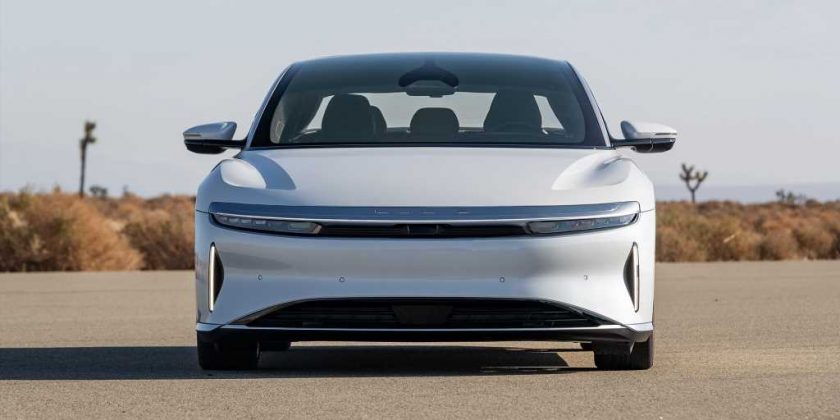As a Lotus alum, Lucid Motors CEO and CTO Peter Rawlinson wanted his Lucid Air electric luxury sedan to at least invoke the feeling of nimbleness and linearity of responses to control inputs without latency or phase lags that the iconic Lotus cars are known for. Of course, the EV’s ambitious 500-mile range target posed numerous problems for this, starting with battery weight. Fat, sticky, range-killing tires were off the table, as were aggressive aerodynamic downforce aids. Another competing goal was Mercedes S-Class ride quality and interior sound levels. So the practical target was to make the car as playful and fun to drive as possible given its necessarily higher weight and lower ultimate grip levels.
Obvious benchmark vehicles for the Lucid Air’s dynamic handling included Porsche’s Panamera and Taycan, while more attainable benchmark cars Lucid purchased for study were a Chevy SS and an E39 BMW 5 Series. Each of these vehicles features modest levels of ultimate grip but feel very playful as they approach them.
The Lucid Air rides on steel springs controlled by Bilstein Damptronic Sky dampers like those Mercedes-Benz uses on the S-Class. They feature remote reservoirs and bespoke valve tuning. Lucid developed the control algorithms that differentiate the ride/handling balance in the different drive modes in-house.
Speaking of drive modes, the default Smooth mode is biased toward safe levels of understeer, comfort steering, and the creamiest ride. The middle Swift mode firms up the steering a bit and instructs the dampers to stiffen up more quickly in response to steering and brake inputs while biasing more torque to the rear and recalibrating the stability control system to allow a bit of mild oversteer. The top Sprint mode, which unleashes full electric power and requires the driver to accept responsibility accordingly, permits the most lurid sliding. Note that the two sportier modes allow the stability control to be reduced to “partial” or turned completely off.
The Lucid Air’s front suspension’s four diagonal links work like control arms but provide a “virtual steering axis.” (The knuckle sweeps a partial cone surface rather than pivoting the tire around a fixed line.) This allows better management of the scrub radius, which improves steering feel and reduces torque steer when power is routed through the front wheels in turns.
In the rear, the multilink suspension features a wide lower control arm that improves caster stiffness. The bottom surface of this cast-aluminum part is smooth for aero efficiency. A single light, stiff casting carries the entire rear suspension, and its forward attachments engage the battery pack, giving the mounting bolt a double-sheer connection that improves stiffness to reduce the transmission of vibration and noise.
The electric power steering rack is among the first to feature full dual redundancy in preparation for future autonomy. It’s controlled by two separate ECUs, either of which can power the rack through any three of its 12 separate electric winding phases. Besides enabling redundancy, utilizing 12 phases minimizes “torque ripple” vibration that might otherwise be felt through the steering wheel.
The vented steel brakes are 15.2-inch discs in front and 15.0 inches in back. (The rears are so big because the Air’s exceptionally low center of gravity means they can do much more work.) They’re clamped by six-piston front and four-piston rear Akebono calipers. The rears incorporate an electric screw-jack actuated sliding caliper for the parking brake, a rare feature that the Lucid shares with the Ferrari LaFerrari. The calipers are also designed to retract the pads upon release to avoid any residual drag that could reduce range.
Except when the battery is too full to accept any energy, regenerative braking can be set to two levels. The highest setting delivers a maximum of 0.30 g deceleration, while the standard level is 0.22 g in the default Smooth drive mode. These amounts are reduced in Swift and Sprint modes, to feel more like the engine braking of a combustion-powered sport sedan.
Recently named the 2022 MotorTrend Car of the Year, the Lucid Air boasts a chassis and technologies that bring it remarkably close to what Rawlinson envisioned for his company’s first product—it truly is a luxury car that rides like one while still delivering a playfulness rare for both its segment and size.
Source: Read Full Article
